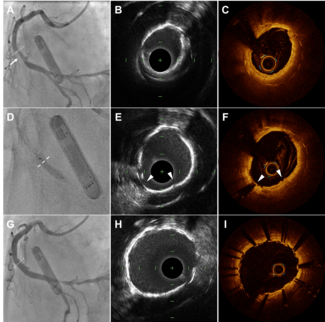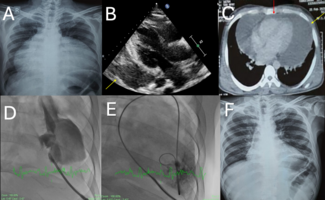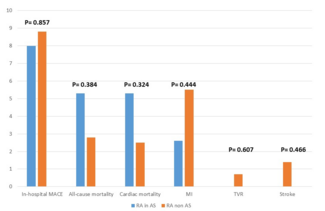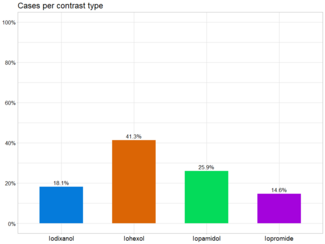Editorial Message
Editor`s Message - October 2003
October 2003
Dear Readers,
This issue of the Journal of Invasive Cardiology includes original research articles, a special medical informatics update, interesting case reports, and articles from the Journal special sections “Clinical Decision Making” and “Clinical Images”.
In the first original research paper, Dr. Christian Hamm and collaborators from the Department of Cardiology at the Kerckhoff Heart Center in Bad Nauheim, the University Hospital in Frankfurt and the University Hospital Eppendorf in Hamburg, Germany present their study of short-term and 6-month follow-up of a peptide-coated ePTFE stent-graft used to treat degenerated saphenous vein grafts. All devices were successfully placed and the 6-month restenosis rate was reported to be 21%. They conclude that the device is safe and effective in treating this difficult lesion type and appears to minimize the need for adjunct distal protection.
The second original research article, submitted by Dr. Jurgen Haase and colleagues from the Red Cross Cardiology Center in Frankfurt, Germany, report on their study comparing restenosis and occurrence of MACE in a turbostratic carbon stent and a stainless steel stent. From their study, it appeared that there was no advantage in 6-month results of the turbostratic stent compared to the stainless steel stent. Drs. Antonio Colombo and Flavio Airoldi from the Columbus and San Raffaele Hospitals in Milan, Italy, have provided a commentary to accompany the article.
In the third research article, Dr. Aaron Kugelmass of the Cardiovascular Division at Henry Ford Hospital in Detroit, Michigan and collaborators representing Beth Israel Deaconess Medical Center in Boston, HCA Inc. in Nashville, Medical City Dallas Hospital in Dallas, Cardiac Data Solutions in Atlanta and the Rollins School of Public Health at Emory University in Atlanta have provided an analysis of the HCA database to determine the effect of diabetes on the outcomes and practice of PCI in the community setting. They found that at baseline diabetic patients had similar outcomes compared with non-diabetic patients, but at one-year follow-up, diabetics were more likely than non-diabetics to have a second PCI in another vessel, have coronary artery bypass surgery and were more likely to experience major adverse cardiac events. Their study underscores the aggressiveness of the coronary disease that manifests itself in diabetic patients. In addition, Drs. James L. Orford from Mayday University Hospital in Croydon, England, and Peter B. Berger from Mayo Clinic in Rochester, Minnesota have provided an accompanying editorial.
The next article is from the American College of Cardiology National Cardiovascular Data Registry (ACC-NCDR) writing group, which has provided an update of the mortality risk model that was previously published, updating the coefficients used in the original model and further validation of the model in a more current cohort of patients from the registry.
The fifth original research article, submitted by Dr. Alfredo Rodriguez and colleagues from Otamendi Hospital in Buenos Aires, Argentina, the Department of Cardiovascular Pathology, Armed Forces Pathology in Washington D.C., and the Comprehensive Cardiovascular Center at St. Vincent’s Hospital in New York City, presents their study of oral rapamycin to prevent restenosis in patients undergoing coronary stent therapy, the ORAR trial. The investigators found that rapamycin was well tolerated when administered during the first month after stent implantation, and they demonstrated that patients with higher levels of the drug measured in their blood stream had significantly lower angiographic late loss and a trend towards lower restenosis rates in de novo lesions.
The last original paper, submitted by Drs. Sackner-Bernstein and Obeleniene from the Division of Cardiology at St. Luke’s-Roosevelt Hospital Center in New York City, is a comprehensive review of the literature on treatment approaches to volume-overloaded heart failure patients, suggesting that veno-venous hemofiltration may be an effective method for managing this clinical situation.
This issue of the Journal also includes two case reports and two case reports with a review on interesting clinical topics. The first case report, submitted by Dr. David Kandzari from the Division of Cardiology and the Duke Clinical Research Institute at Duke University Medical Center in Durham, North Carolina, shows an unusual case in which a patient with prior coronary artery bypass graft surgery in which a gastroepiploic graft was utilized was treated with successful hepatic artery stenting that eliminated coronary steal from the gastroepiploic artery bypass graft, relieving the patient’s anginal symptoms. In the second case report with a review, Dr. Michael Recto and colleagues from the Divisions of Pediatric Cardiology, Hematology/Oncology and the Department of Surgery at the University of Louisville in Louisville, Kentucky present a case in which thrombus formation on the left atrial disc of a CardioSeal Septal Occlusion device occurred 14 days after transcatheter closure of a patent foramen ovale. The authors were able to initiate successful medical therapy utilizing heparin and aspirin and the clot resolved. The next case report, from Dr. Muhammad Siddique and colleagues at the Thoracic and Cardiovascular Institute and Sparrow Health System, Michigan State University in Lansing, Michigan, describes their use of endograft stenting to contain a rupture in the descending thoracic aorta of an elderly patient who was not a surgical candidate. The last case report, submitted by Dr. C.K. Ekonomou and associates from the Department of Cardiology at Laiko Hospital in Athens, Greece, shows an unusual finding in a patient who was shown on angiography to have a rare coronary arteriovenous fistula connecting the left main to the pulmonary artery.
This issue of the Journal also includes articles from two of the special clinical sections. In the first special section, the Clinical Decision Making section, edited by Dr. Michael H. Sketch of Duke University in Durham, North Carolina, Dr. Naotsugu Oyama and colleagues from Hokkaido University Graduate School of Medicine in Sapporo, Japan describe a case of using PCI for a totally occluded site consisting of a huge thrombus. In the Clinical Images special section, edited by Dr. David Rizik from the Scottsdale Heart Group in Scottsdale, Arizona, Dr. Raúl Moreno and colleagues from the Division of Interventional Cardiology at the Hospital Clínico San Carlos in Madrid, Spain describe a post-infarction patient who developed a left ventricular aneurysm that produced a milking-like effect with systolic compression of the distal left anterior descending artery.
It is my hope that all of the articles in this issue of the Journal provide healthcare professionals with valuable information that is useful in the daily care of patients with cardiovascular disease.


















